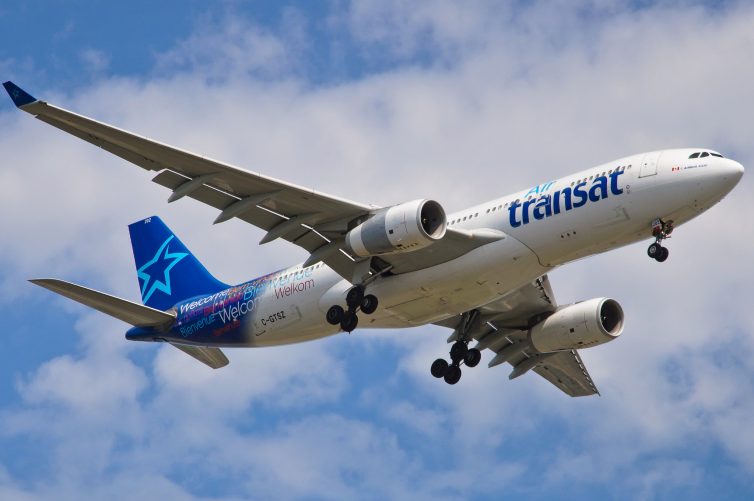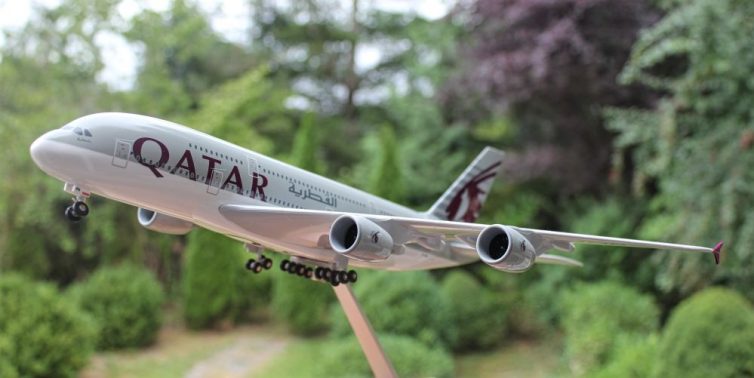
This can be all yours – Photo: AirlineReporter
Do you want to win a Qatar Airways Airbus A380 model? Of course you do! Lucky for you, we have one and we are looking to give it a new home. All you need to do is make sure you are following us on Twitter, and then retweet our contest tweet and you are eligible. The contest will be open until 5:00 p.m. PDT on Friday, August 26th and at that point we will randomly pick from the valid entries. Here, I will make it easy for you with the official tweet below:
%CODE1%
Update: CONGRATS to @lauratherad for winning this sweet, sweet model! Stay tuned for our next contest!
(not so) FREQUENTLY ASKED QUESTIONS
Can you please give me more details about the model?
Yes. It is a 1:200-sized model (a.k.a. big — 14.5″ long, 16″ wingspan). I can’t tell who makes it, but it has a fancy wooden stand. It’s registration number is A7-APA, which makes it the 137th A380 built, and it first flew in June 2013.
Wait, is this a used model?
The photo is of my personal model. The one we are giving away is brand new, in box. We can be model buddies.
Who is eligible?
If you have a Twitter account and follow the rules — you are. I will ship it anywhere in the world to the winner.
Does the model actually fly?
Yes. Once.
I work for Delta, can I win?
Of course. As long as you proudly display it at work.
Does this come with subsidies?
Ha… funny, but no they are not included.
Can you just declare me the winner?
Yes I can. Will I? No.
I don’t have Twitter?
That sucks. Sorry, you need to do this on Twitter to win. It’s free to sign up!
Can I enter on Snapchat?
What’s Snapchat?
It is a fun app where you can take photos and make yourself a princess or a panda bear that cries rainbows — that work?
Um… no.
Can I just leave a comment on this story?
Sure… I probably will even reply to your comment, but it won’t enter you into the contest.
Can you wish me luck?
Good luck!
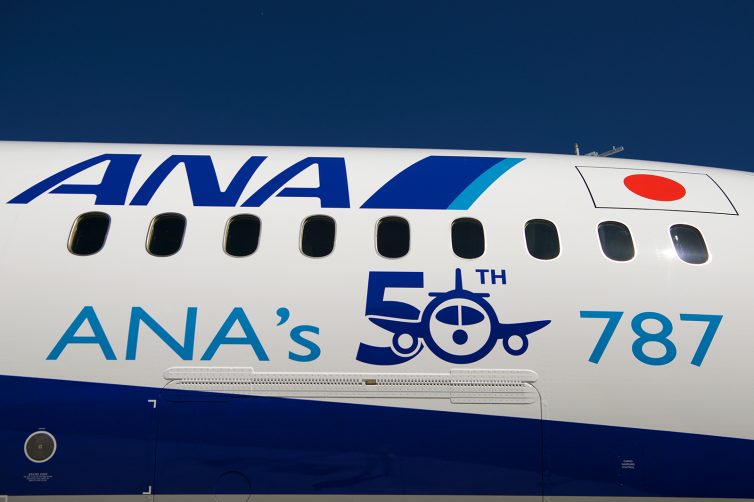
It’s nice when the plane tells you the article’s title – Photo: Bernie Leighton | AirlineReporter
Roughly five years ago, ANA took delivery of its first Boeing 787 Dreamliner. More than that, it was the first 787 to enter commercial service.
Twenty million passengers, three hundred thousand flying hours, and one hundred twenty five thousand flights later, they are now at fifty. That calls for a party.
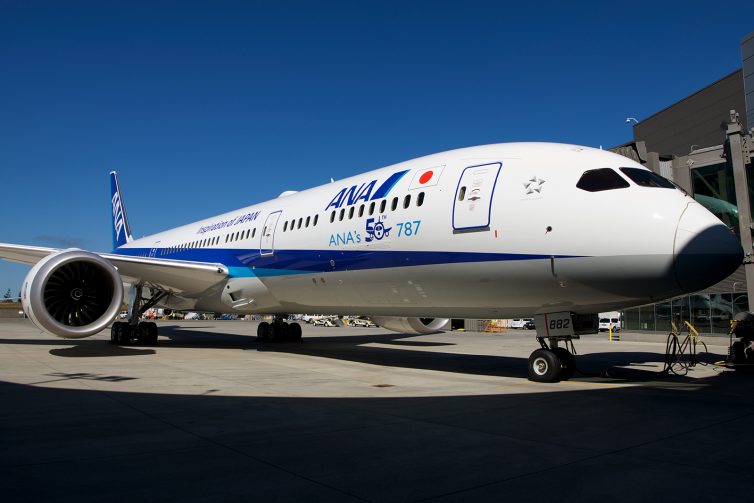
ANA’s newest 787-9 is also their 50th – Photo: Bernie Leighton | AirlineReporter
ANA, took this event as an opportunity to reflect on their involvement with the 787 program.
Clearly, they love it. Though the initial order was for fifty, they now have a further 33 coming after this one. Compared to the 767, this aircraft saves them 98 million U.S. Dollars a year in fuel and 20% in maintenance. These figures are why ANA has been able to use the 787 to open markets that did not seem previously possible. Soon, they will fly to Phnom Penh Cambodia; but the big news is Mexico City.
I recently had the opportunity to fly Air Transat’s Club Class on their service from Manchester to Vancouver using an Airbus A330-200.
Club Class on Air Transat is more equal to premium economy on other European carriers, or World Traveller Plus on British Airways; it is not a true business class. That said, there are only two rows of seats in a 2-2-2 configuration, the seats sport a 36-inch pitch, and there is a dedicated cabin crew member; all this makes the cabin feel very personal.

From Manchester to Vancouver – Photo: GCMap.com
Although my flight did not depart until mid-day, I arrived very early at the check-in area which turned out to be a mistake. On a Friday morning, Air Transat also has a flight to Toronto that departs an hour before the Vancouver service. This meant that my flight was not yet open. After a 30-minute wait I was ready to check in. Although Club Class has its own desk, passengers still had to join a general melee to be processed and have passports checked by the handling agent’s security personnel. Having overcome this early problem, the rest of the processing was quick and the staff were polite.
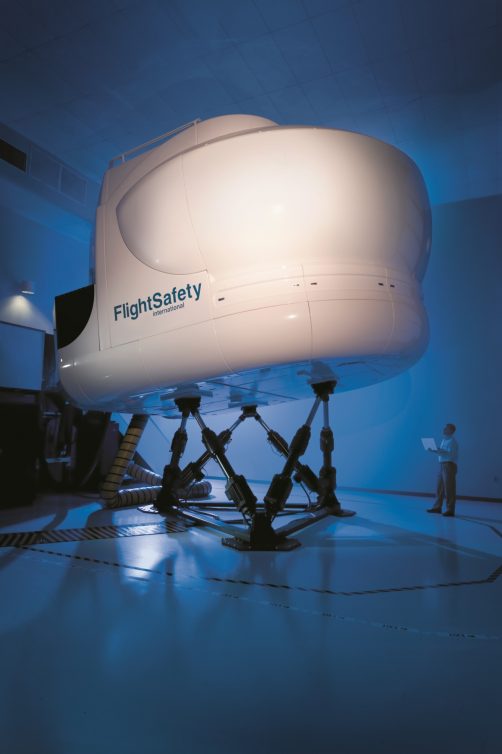
FlightSafety Simulator – Photo: FlightSafety International Inc
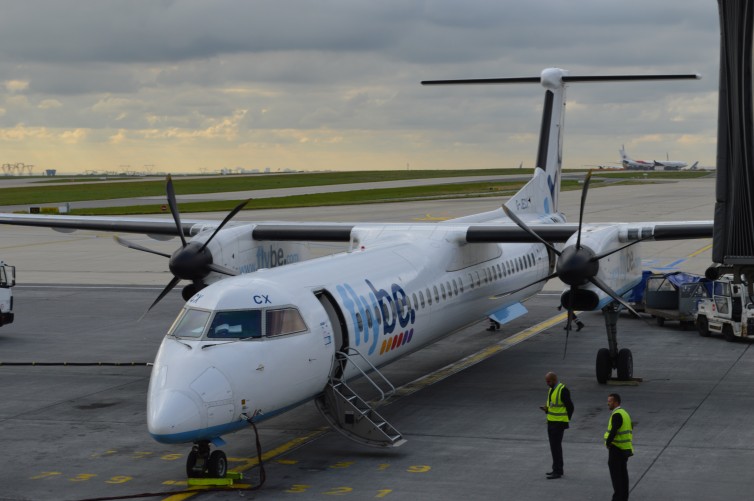
Our ride: Q400 Dash 8 – Photo: Alastair Long

This is never a good thing to see on your computer screen
I realize this is not one of your usual #AvGeek stories on AirlineReporter, but if you’re a traveler, writer, planespotter, and/or photographer (and I happen to be all of the above to some degree), then you know that photos, whether they are taken to tell a story or record a memory, are your treasure, the fruits that result from your hard labor.
My photos may not be valuable to others, but certainly they are valuable to me… some might even be priceless and irreplaceable. Given that, you’d think I’d be more careful about protecting them. Heck, I tell others how to protect their data all the time (just ask my wife). Yet somehow, I never did… maybe it was procrastination, or naivete thinking a relatively new laptop wouldn’t fail, but in any case I had the majority of my photos in one place… on my laptop’s hard drive. I will be the first to admit that what I did was stupid.
So imagine that pit in my stomach that occurred when I hit the power button on my laptop and a simple text system notification appeared on my screen: “Bootable device not found…”



